Knowing how much your horse weighs is an important part of keeping him healthy. If you’re unsure of how to do this properly, we’ve compiled an essential guide to help you out
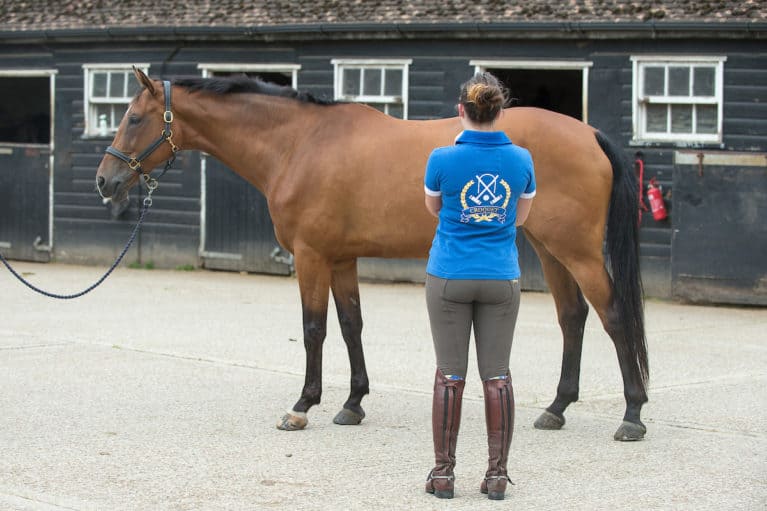
Keeping tabs on your horse’s weight and condition should be a key part of your management routine. Not only is it important for monitoring his health, as being under or overweight can pose serious risk to his wellbeing, but it’ll also give you vital information about whether you need to make any changes to his diet. In addition, it’ll help you be more accurate when it comes to knowing how much to feed him, or when it comes to working out dosages for supplements, wormers and other forms of medication. The easiest and most accessible way to do this is by using a weightape and body condition scoring.
Weightaping
Regularly using a weightape, ideally every couple of weeks, can give you an indicator of your horse’s bodyweight and make it easier to spot any changes. It’ll also be helpful to track your horse’s progress if he’s on a weightloss diet.
How to do it
Stand your horse up square on a firm, flat surface and make sure his weight is evenly distributed across all four feet. Position the tape so it runs all the way around his middle, from behind his withers to just behind his elbows in a sloping line. It should be snug against his sides, but not tight, and you need to take the reading when he breathes out.
It’s important to always take your measurement at roughly the same time, as your horse’s weight can fluctuate throughout the day. For consistency, the same person should also take the measurements each time, as any variance in how the tape is positioned could affect the results.
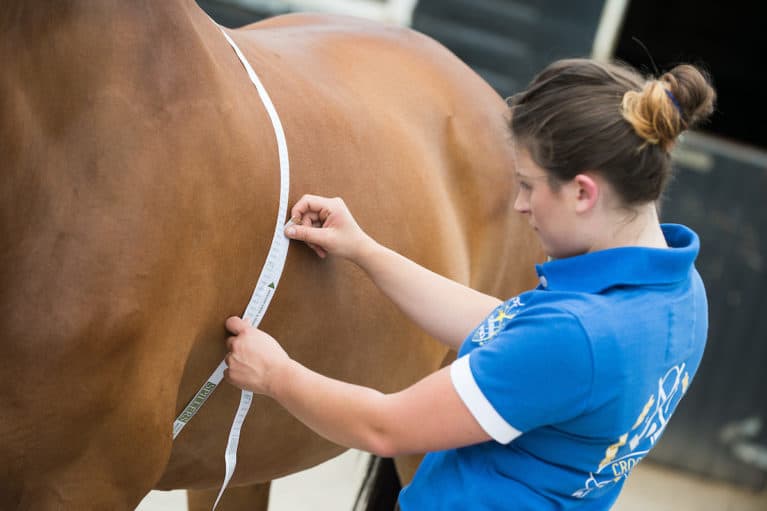
Body condition scoring
Best used in conjunction with weightaping, body condition scoring is an accurate way to assess your horse’s body fat covering. It focuses on several key areas where fat can build up, such as his neck crest, across his ribs and around his tail head. Body condition is measured on either a 1–9 or a 0–5 scale, and a condition score chart will provide images and descriptions for each level. Most leisure horses should be five on a 1–9 scale or a three on a 0–5 scale.
How to do it
Download a condition score chart online – most nutrition companies and equine charities will have one available. Then, stand your horse up square and use your hands and eyes to look and feel for areas of fat so you can compare your findings to the descriptions on the chart. You’ll need to check…
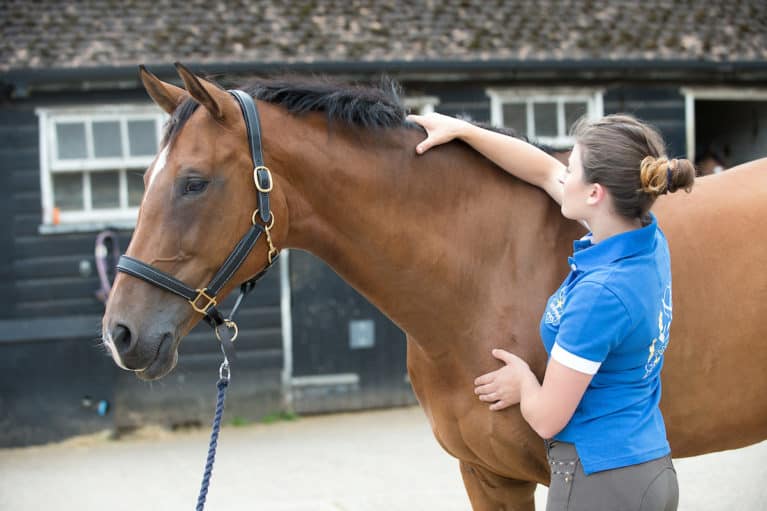
1. Along the top of your horse’s neck all the way down to his withers, feeling for a fatty crest.
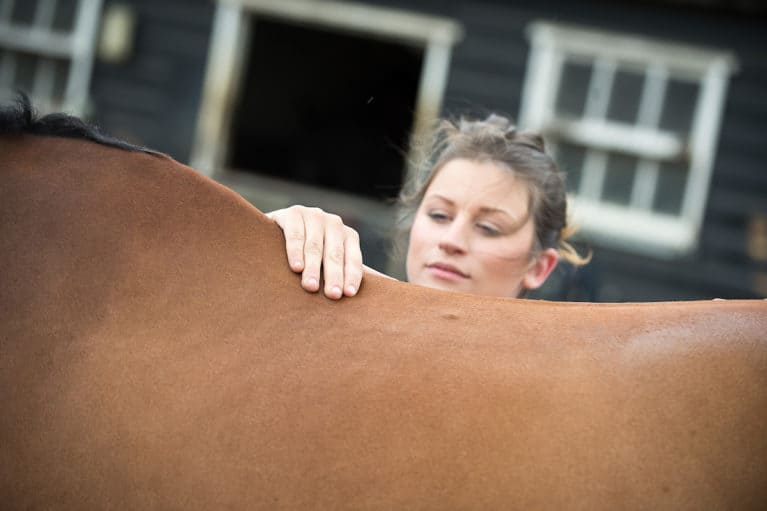
2. From his withers to the top of his tail. Any fatty deposits will cause guttering along his spine.
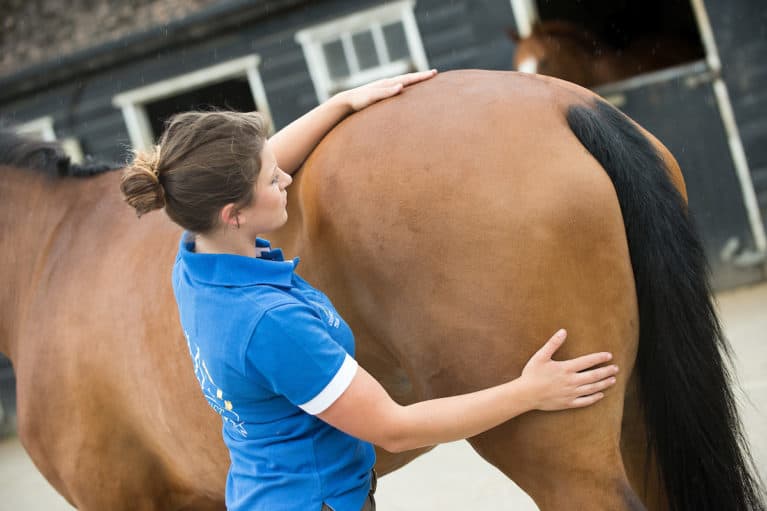
3. Across his quarters, including his croup and pelvis. His hipbones should be well covered, but still easily felt.
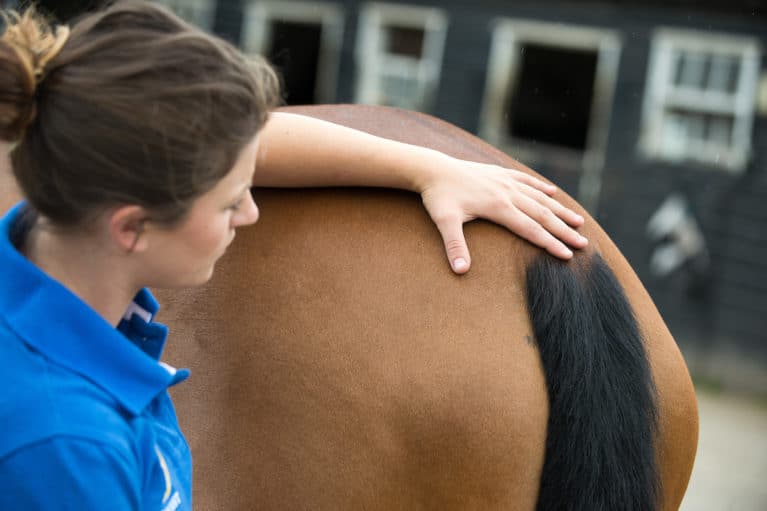
4. As you run your hand across the top of his tail, it should be a smooth curve – an apple- or M-shaped bottom is usually an indication of extra weight.
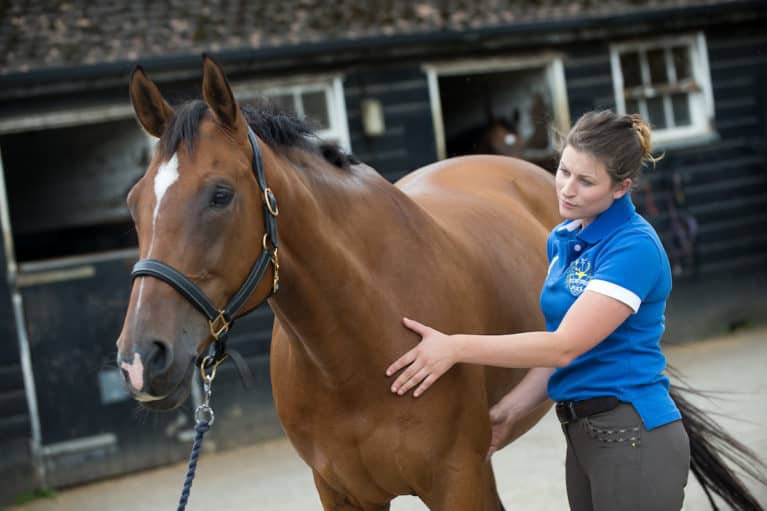
5. Down the side of his neck and over his shoulders. Behind his shoulder blades is a key area for fat to build up.
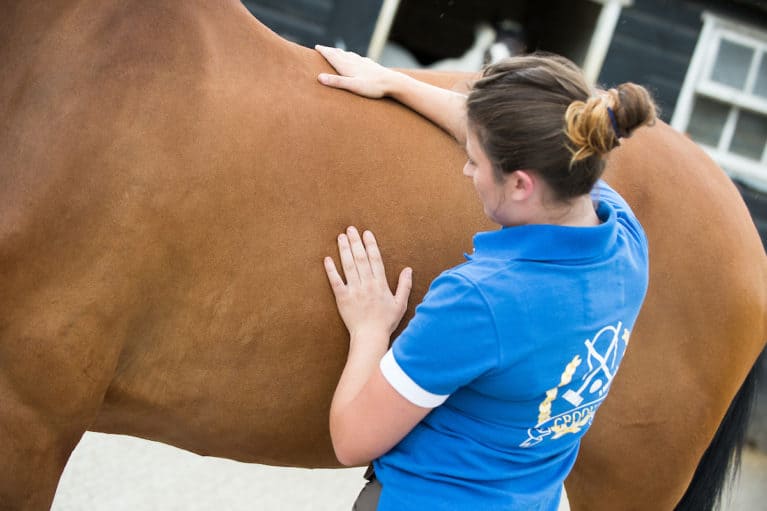
6. Press firmly on his ribcage as you run your hand across it. While you shouldn’t be able to see his ribs, you should be able to feel them.
Because fat doesn’t always build up evenly, different areas of your horse’s body may match different points on the scale. Make a note of your findings as you work along his body and work out an average score when you’ve finished. It can also be quite tricky to be objective about your horse’s weight, so ask a friend to body condition score him, too, and compare the results
TOP TIP
Make a note of your horse’s weightape measurement and body condition score each time. This will help you track changes – good or bad – and act quickly if needed. If he’s a healthy weight, you’ll know what you need to maintain through the year.
DID YOU KNOW?
Many horses naturally fluctuate in weight through the seasons. They’ll often lose weight over winter, when there’s less grass and chilly temperatures mean they might have to burn body fat to keep warm, but gain it again during the spring when the grass starts growing again.
Photos: Jon Stroud















